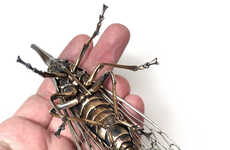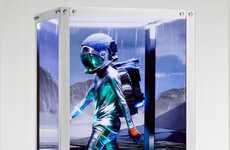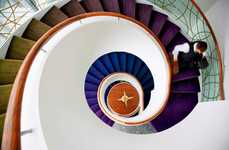One Good Emperor Ben Alun-Jones Questions the Reproduction of Art
Alexandra Serrano — April 23, 2013 — Tech
References: benalunjones & triangulationblog
One Good Emperor Ben Alun-Jones re-imagines sculptures of the Five Good Emperors: Nerva, Trajan, Hadrian, Antoninus Pius and Marcus Aurelius.
Alun-Jones scanned the busts of the aforementioned leaders from both the British Museum in London and the Getty Museum in California. With the use of 3D scanning technology, he was able mix the features of these emperors into 'One Good Emperor.'
As many of the scanned sculptures were reproductions, One Good Emperor Ben Alun-Jones "questions the notions of value and uniqueness in a world where any object can be scanned, sampled and reproduced, simply by recording the object on video," explains the artist on the Triangulation blog. There is a collaborative aspect to the project as the virtual nature of its visuals allows for visitors to create their own versions of combined ancient leaders.
Alun-Jones scanned the busts of the aforementioned leaders from both the British Museum in London and the Getty Museum in California. With the use of 3D scanning technology, he was able mix the features of these emperors into 'One Good Emperor.'
As many of the scanned sculptures were reproductions, One Good Emperor Ben Alun-Jones "questions the notions of value and uniqueness in a world where any object can be scanned, sampled and reproduced, simply by recording the object on video," explains the artist on the Triangulation blog. There is a collaborative aspect to the project as the virtual nature of its visuals allows for visitors to create their own versions of combined ancient leaders.
Trend Themes
1. Reimagined Sculptures - Advancements in 3D scanning technology allow for the recreation of traditional sculptures with a unique twist.
2. Questions of Value and Uniqueness - The ease of reproduction through technology raises questions about the worth and originality of art and objects.
3. Collaborative Art - Virtual art projects offer a participatory and interactive experience for visitors to engage with historical figures and their representations.
Industry Implications
1. Museum and Art Preservation - The use of 3D scanning technology presents an opportunity to preserve and recreate historical objects and art in new and innovative ways.
2. Technology and Design - There is a growing need for designers and technologists to collaborate and push the boundaries in creating new tools for art and design.
3. Tourism and Experience Economy - Experiential tourism can benefit from interactive and collaborative art projects that create unique and memorable experiences for visitors.
2.3
Score
Popularity
Activity
Freshness






















